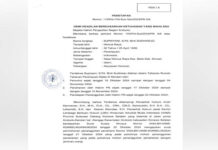Cancer is a complex group of diseases characterized by the uncontrolled growth and spread of abnormal cells. These cells can invade and destroy surrounding healthy tissues. Understanding cancer involves grasping several key concepts:
- Cell Growth and Division:
- The human body is made up of trillions of cells. Cells grow, divide, and die in a regulated manner to maintain normal bodily functions.
- The cell cycle is a series of steps that a cell goes through to divide and produce new cells. Cancer often involves disruptions in this cycle.
- Cancer Cells:
- Cancer begins when genetic mutations occur in certain genes, allowing cells to evade normal growth controls.
- These mutations can be inherited or acquired over time due to exposure to various factors like tobacco smoke, UV radiation, certain chemicals, or viruses.
- Tumor Formation:
- A tumor is a mass or lump of tissue formed by an accumulation of abnormal cells.
- Tumors can be benign (not cancerous) or malignant (cancerous). Malignant tumors can invade nearby tissues and spread to other parts of the body through the bloodstream or lymphatic system.
- Metastasis:
- Metastasis is the process by which cancer cells spread from the original (primary) tumor to other parts of the body.
- This is a critical factor in the severity of cancer and its treatment.
- Cancer Types:
- There are many types of cancer, each characterized by the type of cell affected and the way it behaves. Examples include breast cancer, lung cancer, prostate cancer, and leukemia.
- Cancers are often named based on their tissue of origin (e.g., lung cancer originates in the lungs).
- Cancer Staging:
- Staging helps determine the extent of cancer spread and guides treatment decisions.
- The TNM system is commonly used, where T stands for the size of the primary tumor, N for the extent of spread to nearby lymph nodes, and M for metastasis.
- Risk Factors:
- Various factors increase the risk of developing cancer, including age, family history, exposure to carcinogens, unhealthy lifestyle choices (smoking, poor diet, lack of exercise), and certain infections.
- Prevention and Early Detection:
- Healthy lifestyle choices, vaccination against certain infections (e.g., HPV), and regular screenings can reduce cancer risk.
- Early detection through screenings and awareness of warning signs can improve treatment outcomes.
- Treatment Options:
- Treatment approaches vary based on cancer type, stage, and individual factors.
- Common treatments include surgery, chemotherapy, radiation therapy, immunotherapy, targeted therapy, and hormone therapy.
- Research and Advances:
- Ongoing research aims to better understand the molecular and genetic basis of cancer, leading to more targeted and effective treatments.
- Immunotherapy and personalized medicine are promising areas of cancer research.
It’s important to consult healthcare professionals for personalized information and guidance regarding cancer prevention, diagnosis, and treatment. Advances in medical research continue to enhance our understanding and management of cancer.
Types of Cancer
There are numerous types of cancer, each originating in different tissues and behaving in distinct ways. Here are some common types of cancer:
- Breast Cancer:
- Affects the breast tissue, most commonly in the milk ducts or lobules.
- Mammograms and self-exams are essential for early detection.
- Lung Cancer:
- Develops in the lungs, often linked to smoking but can occur in non-smokers as well.
- Divided into small cell lung cancer (SCLC) and non-small cell lung cancer (NSCLC).
- Colorectal Cancer:
- Affects the colon or rectum (parts of the large intestine).
- Screening through colonoscopies can detect precancerous growths.
- Prostate Cancer:
- Develops in the prostate gland in men.
- Often grows slowly, and early stages may not cause symptoms.
- Ovarian Cancer:
- Affects the ovaries in women.
- Often diagnosed at an advanced stage due to vague symptoms.
- Pancreatic Cancer:
- Begins in the pancreas, a gland that produces digestive enzymes and insulin.
- Typically diagnosed at an advanced stage, making it challenging to treat.
- Leukemia:
- A cancer of the blood or bone marrow, characterized by the rapid production of abnormal white blood cells.
- Classified into acute and chronic forms.
- Lymphoma:
- Affects the lymphatic system, including the lymph nodes and lymphocytes (a type of white blood cell).
- Hodgkin lymphoma and non-Hodgkin lymphoma are the main types.
- Melanoma:
- Develops in the skin cells that produce pigment (melanocytes).
- Often associated with exposure to ultraviolet (UV) radiation from the sun or tanning beds.
- Bladder Cancer:
- Occurs in the lining of the bladder.
- Common symptoms include blood in the urine and changes in urination patterns.
- Kidney Cancer:
- Develops in the kidneys, most commonly as renal cell carcinoma.
- Often diagnosed at an early stage due to symptoms like blood in the urine and flank pain.
- Liver Cancer:
- Can be primary (originating in the liver) or secondary (resulting from the spread of cancer from other organs).
- Chronic viral hepatitis, alcohol abuse, and cirrhosis are risk factors.
- Cervical Cancer:
- Affects the cervix (the lower part of the uterus) and is often linked to human papillomavirus (HPV) infection.
- Regular Pap smears can detect precancerous changes.
- Thyroid Cancer:
- Develops in the thyroid gland, which regulates metabolism.
- Most cases have a favorable prognosis.
- Brain Cancer:
- Can occur in the brain (primary) or result from the spread of cancer from other parts of the body (secondary or metastatic).
- Symptoms vary based on the location of the tumor.
These are just a few examples, and there are many other types of cancer, each with its unique characteristics and challenges. It’s important to note that advances in research continually contribute to our understanding of cancer, leading to improved diagnostic methods and treatment options.
Causes of Cancer
Cancer is a complex group of diseases, and its causes are often multifactorial, involving a combination of genetic, environmental, and lifestyle factors. Here are some key factors associated with the development of cancer:
- Genetic Factors:
- Inherited Mutations: Some individuals inherit genetic mutations that increase their risk of developing certain types of cancer. Examples include BRCA1 and BRCA2 mutations associated with breast and ovarian cancers.
- Environmental Factors:
- Carcinogens: Exposure to cancer-causing substances, known as carcinogens, is a significant risk factor. Examples include tobacco smoke, asbestos, certain chemicals, and pollutants.
- Radiation: Exposure to ionizing radiation, such as from X-rays or radiation therapy, can increase the risk of cancer. Ultraviolet (UV) radiation from the sun is a risk factor for skin cancer.
- Lifestyle Factors:
- Tobacco Use: Smoking and tobacco use are leading causes of several types of cancer, including lung, bladder, and pancreatic cancer.
- Diet and Nutrition: A poor diet, high in processed foods, red and processed meats, and low in fruits and vegetables, is associated with an increased cancer risk.
- Physical Activity: Lack of regular physical activity is linked to an increased risk of certain cancers.
- Obesity: Being overweight or obese is a risk factor for several types of cancer, including breast, colorectal, and pancreatic cancer.
- Infections:
- Certain infections, particularly chronic infections, can increase the risk of developing cancer. Examples include human papillomavirus (HPV) and cervical cancer, hepatitis B and C viruses and liver cancer, and Helicobacter pylori and stomach cancer.
- Hormonal Factors:
- Hormone Replacement Therapy (HRT): Long-term use of hormone replacement therapy in postmenopausal women has been associated with an increased risk of certain cancers, including breast cancer.
- Reproductive Factors: Early onset of menstruation, late onset of menopause, and nulliparity (never having given birth) are factors that can influence cancer risk.
- Chronic Inflammation:
- Chronic inflammation can contribute to the development of cancer. Conditions such as inflammatory bowel disease (e.g., Crohn’s disease, ulcerative colitis) are associated with an increased risk of colorectal cancer.
- Immunosuppression:
- Weakened immune systems, whether due to medical conditions or medications (such as after organ transplantation), can increase susceptibility to certain cancers.
- Age:
- The risk of cancer increases with age. Many cancers are more common in older individuals.
It’s important to note that while these factors are associated with an increased risk of cancer, they do not guarantee the development of cancer, and individuals with certain risk factors may never develop the disease. Additionally, some cancers occur in the absence of known risk factors, highlighting the complexity of cancer development. Regular screenings, a healthy lifestyle, and early detection are crucial for reducing the risk and improving outcomes.
Cancer Risk Factors
Cancer risk factors are elements or conditions that increase the likelihood of developing cancer. It’s important to note that the presence of one or more risk factors does not guarantee the development of cancer, as many people with risk factors never develop the disease. Similarly, individuals without apparent risk factors can still develop cancer. However, understanding and addressing these risk factors can contribute to cancer prevention. Here are some common cancer risk factors:
- Age:
- The risk of cancer increases with age. Most cancer cases occur in individuals over the age of 65.
- Genetic Factors:
- Inherited Mutations: Some individuals inherit genetic mutations that predispose them to certain types of cancer. For example, mutations in the BRCA1 and BRCA2 genes are associated with an increased risk of breast and ovarian cancer.
- Family History:
- A family history of certain cancers, especially in first-degree relatives (parents, siblings, children), can indicate a genetic predisposition.
- Tobacco Use:
- Smoking and the use of tobacco products are major risk factors for several types of cancer, including lung, throat, mouth, esophagus, and bladder cancer.
- Diet and Nutrition:
- A poor diet, low in fruits and vegetables and high in processed foods, red and processed meats, and saturated fats, is associated with an increased risk of various cancers.
- Physical Inactivity:
- Lack of regular physical activity is linked to an increased risk of certain cancers, including breast, colon, and endometrial cancer.
- Obesity:
- Being overweight or obese is a risk factor for multiple types of cancer, such as breast, colorectal, pancreatic, and kidney cancer.
- Sun Exposure:
- Exposure to ultraviolet (UV) radiation from the sun and tanning beds increases the risk of skin cancer, including melanoma.
- Alcohol Consumption:
- Heavy and regular alcohol consumption is associated with an increased risk of developing several types of cancer, including liver, breast, and colorectal cancer.
- Chronic Infections:
- Infections with certain viruses and bacteria can increase cancer risk. Examples include human papillomavirus (HPV) and cervical cancer, hepatitis B and C viruses and liver cancer, and Helicobacter pylori and stomach cancer.
- Hormone Replacement Therapy (HRT):
- Long-term use of hormone replacement therapy in postmenopausal women is associated with an increased risk of breast and ovarian cancer.
- Environmental and Occupational Exposures:
- Exposure to certain chemicals, toxins, and pollutants in the environment or workplace can increase the risk of specific cancers.
- Radiation Exposure:
- Exposure to ionizing radiation from medical imaging, radiation therapy, or environmental sources can increase the risk of cancer.
- Immune System Suppression:
- Weakened immune systems, whether due to medical conditions or medications, can increase susceptibility to certain cancers.
- Reproductive and Hormonal Factors:
Factors such as early onset of menstruation, late onset of menopause, and never giving birth (nulliparity) can influence cancer risk, especially in breast and ovarian cancer.
It’s important for individuals to be aware of these risk factors and make lifestyle choices that promote overall health and reduce the risk of cancer. Regular screenings and early detection are also critical in managing and preventing cancer. If you have concerns about your cancer risk, it’s advisable to discuss them with a healthcare professional who can provide personalized guidance and recommendations.





























